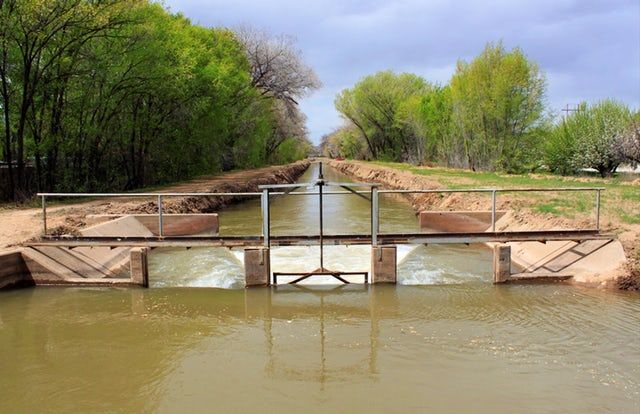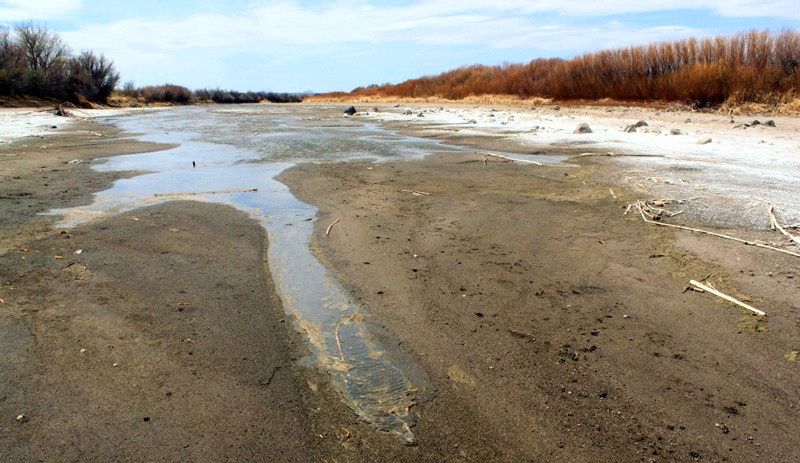Why Some Western Water Agencies Are Writing 100-Year Water Plans
Published on by Jake B in Academic
Climate change is causing water managers to think long term about their resources. Several western agencies are planning a century in advance, but that’s not without its headaches.

In February of this year, the largest water district in a state with little water enacted a plan that attempts to manage that increasingly fickle resource for 100 years.
The plan, Water: 2120, is the Albuquerque Bernalillo County Water Utility Authority (ABCWUA) in New Mexico’s blueprint to direct water procurement, protection and use for the next century.
“This really came out of eight to 10 of us sitting around in a room every Wednesday morning and talking this through,” said Katherine Yuhas, water resources manager at ABCWUA and one of the lead planners on the project.
It’s common for water agencies to develop plans looking 20 to 40 years ahead, or in some cases 50 to 60 years. And ABCWUA, of course, has had planning documents in the past, the last one looking 60 years out. But “this is the first one to take into account climate change,” Yuhas said, and “it’s the first one to look out 100 years.” Plus, it covers everything from watersheds to infrastructure to household use.
Other Western water groups are also working on long-range plans. Santa Fe is looking closely at Water: 2120. Next year, Austin Water plans to unveil Water Forward, which it calls, “a water plan for the next century.” And in Arizona, the Office of Assured and Adequate Water Supply Program at the Department of Water Resources requires new developments in certain metropolitan areas to show they have physical and legal access to water for 100 years.
Last year, the United States Environmental Protection Agency published “What Climate Change Means for New Mexico,” with a blunt assessment: “The changing climate is likely to increase the need for water but reduce the supply.” The future is predicted to be hotter, drier and subject to “extreme precipitation events.” Plus, population is growing. The ABCWUAserves more than 700,000 people today and before 2060 that number is expected to top 1 million.
Climate-change predictions were the prompt for the extensive plan, Yuhas said. “One hundred years seemed like about as far out as we could push.”
The plan calls for increased water conservation through groundwater management (including recharging the aquifer beneath Albuquerque), surface-water management (including protecting current water rights and buying more in the future), watershed restoration, water recycling and reuse programs and stormwater capture and storage.
Kimery Wiltshire, chief executive of Carpe Diem West, a nonprofit group that works on water issues in the Western U.S., said the plan is “a very smart thing for them to do” because it’s “really taking into account that climate change is going to be with us for a very long time.”
But it’s tough to plan that far into the future. Wiltshire noted, “There’s no standard for writing a water plan under climate change. There is no checklist.”
Tony Pulokas, a developer and senior engineer with HydroLogics, a firm that develops large-scale water resource models for government groups around the globe, sounds a note of caution about plans that contain multiple threads of uncertainty – namely: climate, water supplies, population and government itself.
“In general I think it’s wise to be looking well ahead in the future,” he said. “It’s also true that there is a great deal of uncertainty as to what the demand for water will be in 100 years, what the effects of climate change might be, and really, what sort of changes there might be to the whole legal framework as for how water is managed.”
The New Mexico plan sounds “more ambitious than usual,” Pulokas said.
“We feel very confident about what we’re going to see over the next 10 years,” Yuhas said. “We feel far less confident about what we’re going to see 90 years out. But the goal of this plan is to update it every 10 years. So as we get better and better information … we will be updating the plan.”

Sterling Grogan is a watershed ecologist who spent eight years at the Middle Rio Grande Conservancy District as a biologist and planner, and 10 years before that as a graduate fellow at the University of New Mexico in biology. He sees the plan’s long-term strength in its trees. “The way that the plan deals with watersheds I think is very important,” he said. That’s because the plan connects the dots between customers’ taps and the upstream forests that naturally gather and store the water. Protecting those forests is a key part of the plan for securing water for future generations.
Read more: News Deeply
Media
Taxonomy
- Business Strategy
- Integrated Water Management
- Utility Management
- Water Resources Management
- Utilities